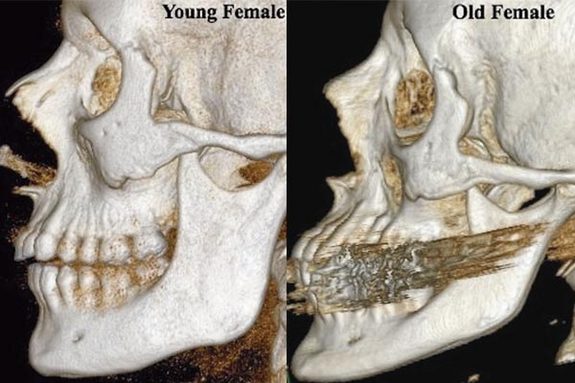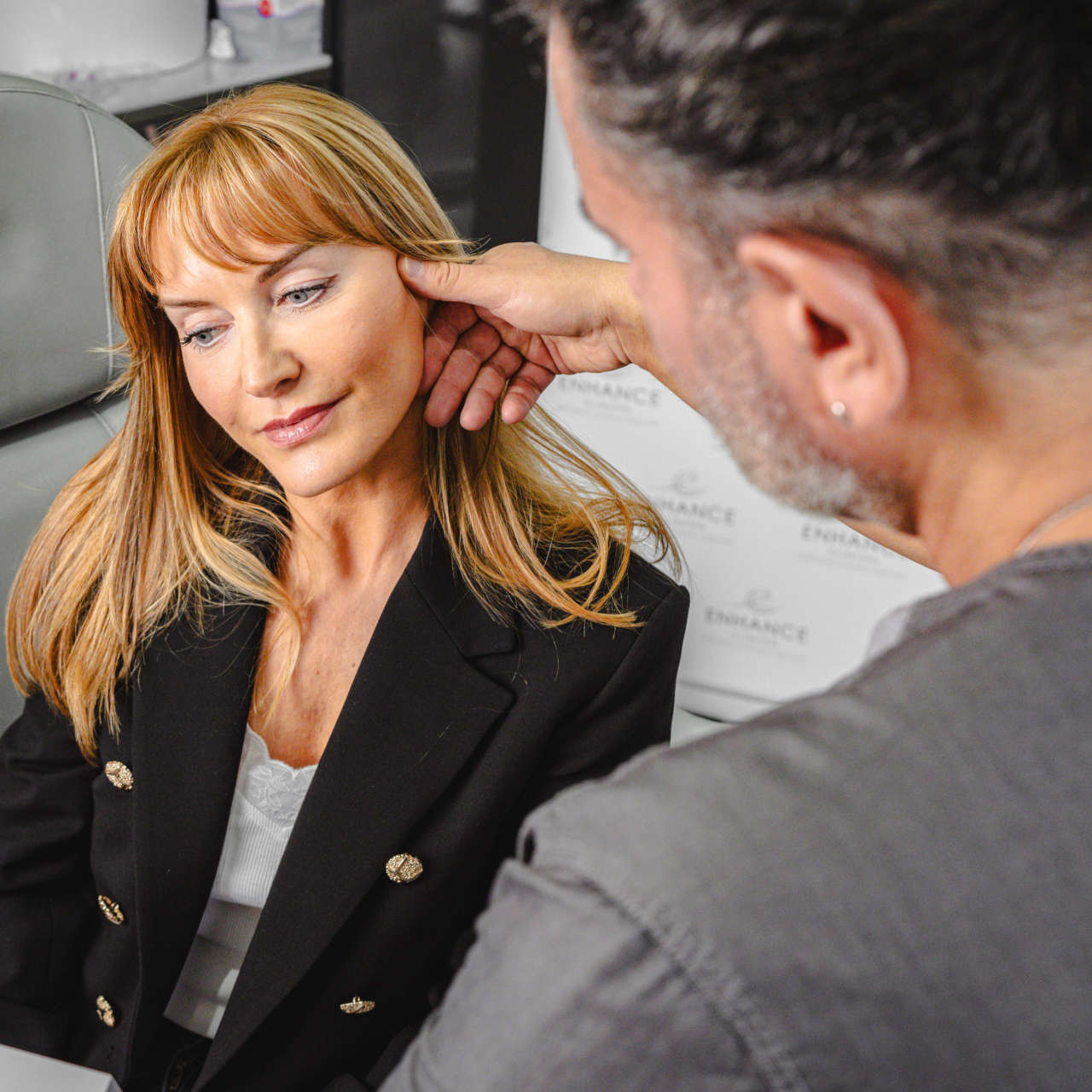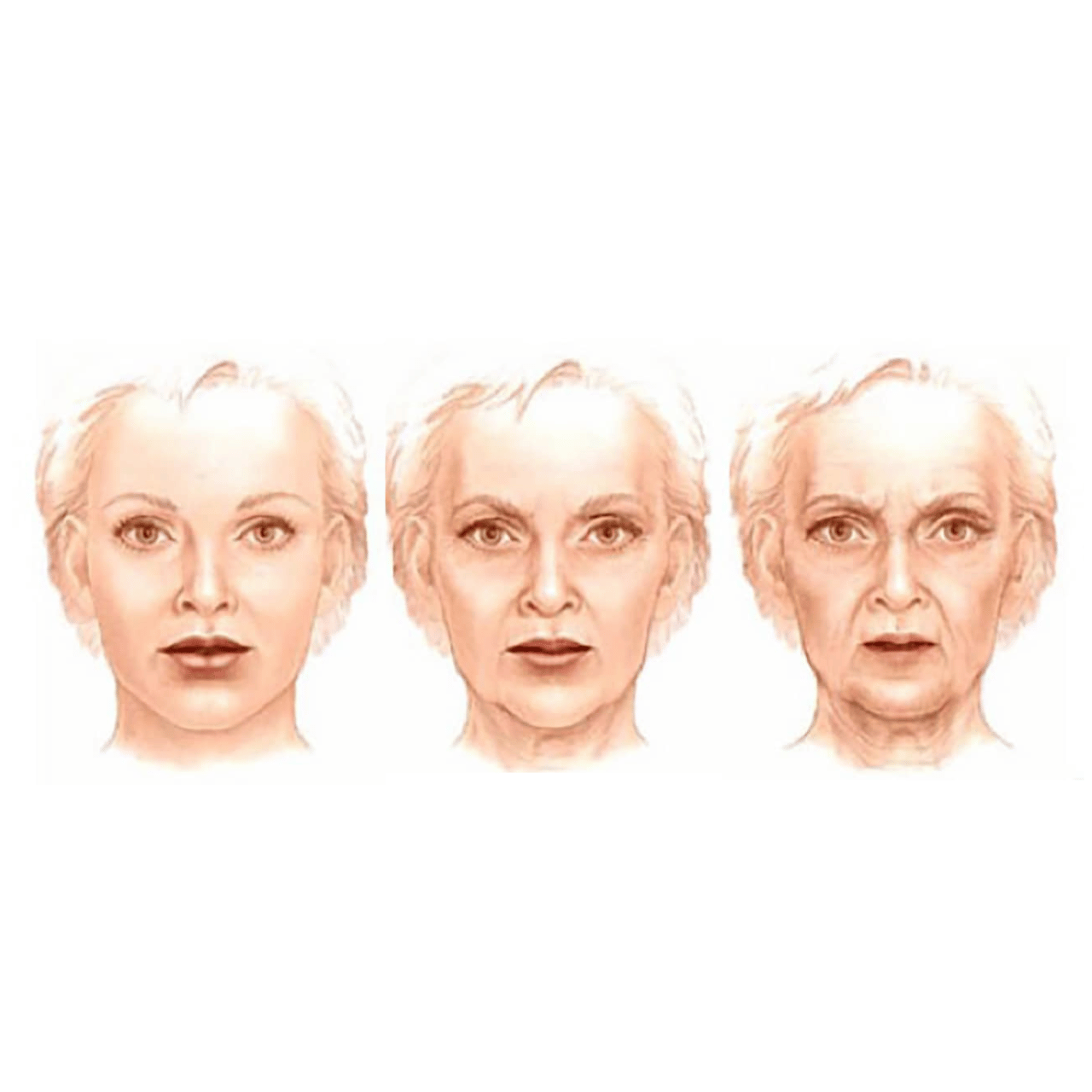What is Aesthetic Facial Design?
Most people seeking our advice for facial aesthetic design express concerns over individual lines, folds or blemishes. These are based on what the individual perceives when they look in a mirror, often with lighting and magnification.
While these are important for us to note, it is worth considering what we look for when we decide whether someone looks well, attractive and youthful.
When we look at a face, we respond to curves and outlines, volume, light and shadow. Loss of volume, with loss of the arcs and contours of the face and hollows, make us appear old and tired.
There are 4 key stages to facial aging:
- Bone loss in skull/facial skeleton
- Redistribution of fat in facial fat pads
- Muscle response to volume loss
- All changes associated with skin aging

Understanding facial ageing

Step 1
As we age, lots of bone is lost from the skull…
The eye sockets open out, the nose aperture opens wider, we lose bone off the jaw and maxilla (under the eyes).
The mid-face fat pads shrink, and the jowl fat can grow.
All these changes result in the youthful arcs and contours of the face being replaced by hollows (especially temples and cheeks). Tissues sag due to loss of support (jowls), and muscles tighten. An example of this is in the chin where the mouth corners get pulled down and the chin rolls up and takes on a pebbly appearance.
A youthful face is in proportion vertically and horizontally and is oval or heart-shaped.
With age, these proportions are distorted, and the shape of the face squares off.

Step 2
Bone loss can be compensated for with volume fillers…
Fat redistribution can be compensated for with fillers and Aqualyx.
Muscle reaction is compensated for by volume restoration and botulinum toxin.
Skin ageing can be addressed in a number of ways described elsewhere on this site.
When we address all four aspects of the ageing face the most impressive results are seen.

